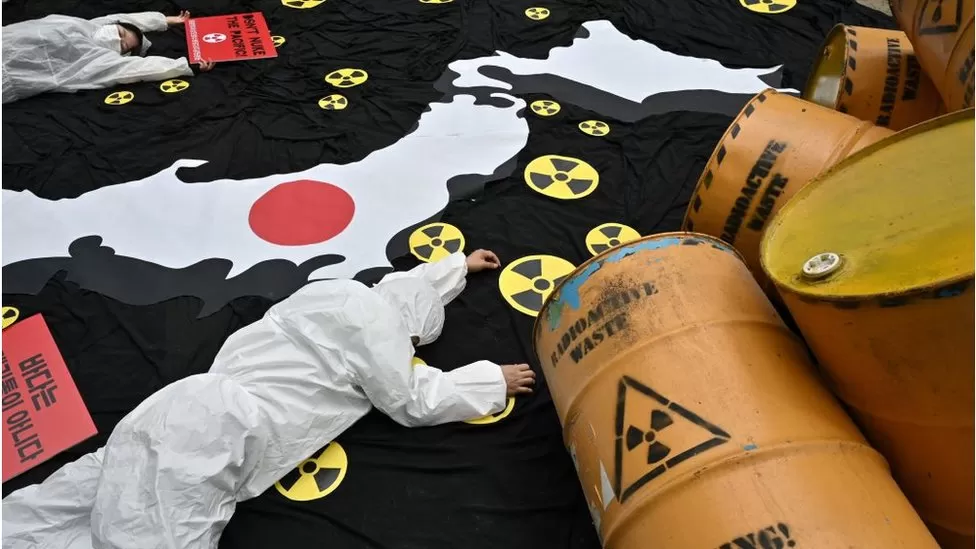Fukushima: Anxiety and anger over Japan’s nuclear waste water plan

Japanese plans to release treated waste water from the Fukushima nuclear plant have sparked anxiety and anger at home and abroad.
In the wake of the 2011 tsunami, the plant has accumulated more than a million tonnes of treated waste water. It is now being discharged into the Pacific Ocean by Japan.
Japanese plans have been endorsed by the UN nuclear watchdog, the International Atomic Energy Agency (IAEA).
However, since it was announced two years ago, the plan has been deeply controversial in Japan, with local communities expressing concerns about contamination.
The fishing and seafood industries in Japan and the surrounding region have also expressed concerns about their livelihoods, as they fear consumers will refrain from buying seafood as a result.
Tokyo’s neighbors are not happy either. Japan has been accused of treating the ocean as its own “private sewer” by China. Tuesday, it criticized the IAEA’s report for its “one-sided” conclusions.
What is Japan’s plan and how has it churned up the waters?
What does Japan plan to do with the nuclear waste?
A cooling system has been in place since the Fukushima nuclear disaster to cool down the fuel rods of the reactors. The plant produces contaminated water every day, which is stored in massive tanks.
Japan says more than 1,000 tanks have been filled, but this is not a sustainable long-term solution. Over the next 30 years, it intends to slowly discharge this water into the Pacific Ocean.
A nuclear plant routinely releases treated waste water into the ocean, but this is no ordinary nuclear waste given that it is the by-product of an accident.
Fukushima water is filtered through Tepco’s Advanced Liquid Processing System (ALPS), which reduces most radioactive substances to acceptable safety levels.
The radioactive forms of hydrogen and carbon, tritium and carbon-14, are difficult to separate from water. As they are formed in the Earth’s atmosphere and can enter the water cycle, they are prevalent in the natural environment, water and even humans.
Radiation levels from both are very low, but excessive consumption can pose a risk.
The filtered water is then treated again, and the remaining substances’ concentrations are reduced by diluting it with seawater. As a result, Tepco says it won’t accidentally release undiluted waste water.
Japan’s government believes the final tritium concentration – about 1,500 becquerels per litre – is much lower than the level required for nuclear waste discharge or drinking water by the World Health Organization. Carbon-14 levels will also meet standards, according to Tepco.
The Japanese government and Tepco conducted studies to prove that the discharged water poses little risk to humans and marine life.
The plan has been backed by a large number of scientists as well. In terms of volume and radioactivity, the released water will be a drop in the ocean. The IAEA’s Fukushima reports were advised by molecular pathology expert Gerry Thomas, who worked with Japanese scientists on radiation research. He said that there is no evidence that these extremely low levels of radioisotopes have a detrimental health effect.
